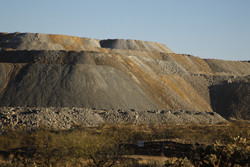Core scanning reveals industrial history
Sediments deposited in the world's seas, lakes and rivers act as a 'time machine' by storing information about past changes in climate and land use. In some cases they can also provide information on past industrial activity, which is revealed by the presence of contaminants in the source area. Therefore, sediment cores are widely used to investigate past environmental change. The EU-funded 'Innovations in fluvial environmental research: Core scanning of flood and contaminant histories' (INFER)(opens in new window) project developed techniques for using micro-XRF core scanners, which are employed to analyse floodplain sediments. The results can be used to study the impact of ancient floods from the Holocene period (11 700 years before present). The technique can also be used to assess contamination of the floodplain due to historical metal mining activities. Micro-XRF core scanning enables fast, non-destructive chemical analysis of sediments smaller than 1 mm. The technology was tested against corresponding geochemical and high-resolution imaging techniques using scans of core sections. Direct grain size measurements using image analysis were compared with the zirconium/rubidium grain size proxy, which corresponded relatively well. This enables micro-XRF geochemical data to be compared with particle-size data. Geochemical analysis is also underway to develop a calibration model based on synthetic standards matched to the floodplain sediment. The work to develop standards shows promise, but is strongly influenced by the very high levels of zinc and lead found in mine wastes. The mapping of contaminants focused on the catchment of the river Avoca, in the Republic of Ireland, which has a history of lead, zinc and copper mining. Preliminary analyses of samples using micro-XRF core scanning have shown very high concentrations of zinc and lead in waste at abandoned mine sites and further downstream. Much of the contaminated material is deeply buried and would not have been detected using conventional field sampling methods. As such, micro-XRF core scanning provides a valuable new technique for investigating contaminated environments.



